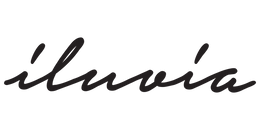So you have decided to take the plunge and want to get your hair colored professionally. You have researched a salon, maybe a favorite hair artist / stylist, and now want to know more about which color style to go for!
Before you book your appointment, we explain the various color techniques popular globally so your hair artist can communicate with you to give you the hair you desire!
We list out some of the popular coloring styles and hair color techniques used :
1. Ombré Color
2. Ombré Highlights
A more subtle option with sections of hair using the Ombré technique instead of a global (full hair) color.
3. Balayage
A freehand 'painting' technique that is used to get an ombré gradient. With this technique, the lightening agent (read more in our series about how hair color works) is painted in freehand directly onto the tips of the hair and then feathered upward to the midpoint of your hair.
4. Reverse Balayage
Starts with a lighter color and then fades to dark vs a classic Balayage which starts with a darker color at the base of your hair.
5. Sombré Color
A subtle version of ombré that fades between two colors that are closer in tone.
6. Dip-dyed Hair
Color typically goes between two extremes, with little to no midtone or gradient between the two shades creating a striking, eye-catching look.
7. Highlights
Sections of hair are dyed a lighter color (usually with just a lightening agent). This color variation throughout the hair adds dimension and can accentuate the style of a haircut or the shape of a curl.
8. Babylights
A subtle variation on regular highlights with smaller hair sections for a less 'bold' look. With babylights, the thin highlights are placed at the hair roots and around the edges of the face.
9. Ribbon / Ribbing highlights
Another 'more subtle' variation with different placement modification than babylights. Thin highlights woven into the lengths of your hair, adding small hints of color throughout.
10. Lowlights
An opposite technique of highlighting where the hair color is deepened by adding selected strands of darker shades. Primarily for blonde, or lighter colored hair.
11. Color Melt
A transition between two colors, with a single, flawless gradient. There are no chunks, color variations, or dimensional coloring. Instead, one color melts right into the next.
12. Ecaille or Tortoiseshell
A soft blend between gold and chocolate base throughout the hair. Think of tortoiseshell sunglasses to understand the colors used. A slight gradient of darker colors is used at the roots of the hair, warming to lighter, honey tones at the ends.
A special shoutout to Ogle School, Texas.
www.ogleschool.edu for excellent educational instructions on on-trend hair-styles.

